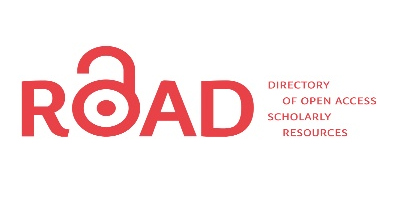INFLUENCE OF 1-NAA ON THE PRODUCTIVITY OF TOMATOES
DOI:
https://doi.org/10.31395/2310-0478-2018-1-48-52Keywords:
tomatoes, 1-NAA, morphogenesis, carbohydrates, nitrogen-containing compounds, yieldsAbstract
Treatment of plants with phytohormones and synthetic growth regulators causes changes in the growth rate of individual organs, and also affects the process of fruiting, the number of implanted fruits and the quality of products.It should be noted that the functioning of the donor-acceptor system due to the action of growth stimulators of plants, in particular auxins, due to the productivity of crops, is insufficiently studied. Representative of auxin synthetic growth regulators is 1-naphthylacetic acid (1-NAA).The results of the study indicate a significant increase in the total mass and mass of individual organs of tomatoes plants.There was a significant increase in the total number of leaves per plant, which was accompanied by a significant increase in the area of the leaf surface, an increase in the index of photosynthetic activity compared with the control. The use of 1-NAA stimulates the formation of a more powerful leaf apparatus, which serves as a donor of assimilates in the donor-acceptor system of plants. The obtained data indicate a significant increase in the net productivity of photosynthesis in the effects of the growth stimulator. In addition, there was a significant increase in the content of chlorophyll in the leaf.Analysis of the data of the study indicates a change in the content of carbohydrates in different vegetative organs of plants during the fruiting period. Considering the significant increase in the mass of leaves, roots and stems under the action of 1-NAA, we can state the increase in gross production and accumulation of carbohydrates in plants of the experimental variant. These changes are related to the optimization of the mesostructure, the increase of chlorophyll content and an increase in the values of NPF due to the action of 1-NAA. There was a significant decrease in the concentration of total, protein and non-protein nitrogen in the vegetative organs during the formation of the fruits and at the end of the fruiting period of tomatoes plants of the experimental variant.Due to better provision of assimilates and various forms of nitrogen, yields have increased significantly. In particular, the number of fruits per plant increased by 22% and the productivity of the crop increased by 20%.The use of 1-NAA led to a significant increase of the number of leaves, their mass and total leaf area, and also improved the mesostructure characteristics of the leaves and their photosynthetic productivity. The formation of a more powerful photosynthetic apparatus provided a more efficient process for the accumulation and supply of assimilates from leaves and from other vegetative organs of the plant for the needs of fruit growth and formation. Treatment of plants with the drug contributed to a better supply of fruits with nitrogen in the process of their growth. As a result of the anatomical- morphological and physiological changes following the actions of the 1-NAA,occurred a significant increase of the number of fruits per plant and a significant increase of the yield of tomato of the Bobcat variety.
References
Фотосинтез. Т. 2: Ассимиляция СО2 и механизмы ее регуляции / Д. А. Киризий, А. А. Стасик, Г. А. Прядкина, Т. М. Шадчина - М.: Логос, 2014. - 480 с.
Кур'ята В. Г. Ретарданти - модифікатори гормонального статусу рослин. - Фізіологія рослин: проблеми та перспективи розвитку: у 2 т., Т. 2 / В. Г. Кур'ята // НАН України, Ін-т фізіології рослин та генетики, Укр. т-во фізіологів рослин; голов. ред. В. В. Моргун . - К.: Логос, 2009. - С. 565-589.
Попроцька І. В. Зміни в полісахарадному комплексі клітинних стінок сім'ядолей проростків гарбуза за різної напруженості донорно-акцепторних відносин в процесі проростання/ І.В. Попроцька- 2014. -Т.46, №3.- С. 190-195. - (Фізіологія і біохімія культ. рослин).
Maize grain yield components and source-sink relationship as affected by the delay in sowing date/[ L. E. Bonelli, J. P. Monzon, A. Cerrudo, and other]..- №1, 2018 2016.- 198.- P. 215-225.
Poprotska, I. V. Features of gas exchange and use of reserve substances in pumpkin seedlings in conditions of skoto- and photomorphogenesis under the influence of gibberellin and chlormequat-chloride. / I. V. Poprotska, V. G. Kuryata // Regulatory mechanisms in biosystems, 8(1), 71-76. - 2017
Yu S. M. Source-Sink Communication: Regulated by Hormone, Nutrient, and Stress Cross-Signaling/ S. M. Yu, S. F. Lo, T. D. Ho // Trends in plant science.-2015. - 20(12). - P. 844-857.
Structure-function analysis of the presumptive Arabidopsis auxin permease AUX1. /[ Swarup R, Kargul J, Marchant A, and other]. Plant Cell. - 2004 Nov; 16(11):3069-83.
High-affinity auxin transport by the AUX1 influx carrier protein. /[ Yang Y, Hammes UZ, Taylor CG, and other]. Curr Biol. - 2006 Jun 6; 16(11):1123-7.
Strader LC, Bartel B. Transport and metabolism of the endogenous auxin precursor indole-3-butyric acid/ LC Strader, B Bartel. Mol Plant. - 2011 May; 4(3):477-86.
Мокроносов А. Т. Методика колличественной оценки структу- ры и функциональной активности фотосинтезирующих тканей и органов [Тр. по прикл. ботанике, генетике и селекции.] / А. Т. Мокроносов, Р. А. Борзенкова - 1978. - Т. 61, №3. - с. 119-131.
AOAC. Official Methods of Analysis of Association of Analytical Chemist International 18th ed. Rev. 3.2010./Asso. of Analytical Chemist. Gaithersburg, Maryland, USA.,-2010.
Байер Я. Формирование урожая основных сельскохозяйственных культур /Я. Байер; [пер. с чешского З. К. Благовещенского]. - М.: Колос, 1984 - С.188-192.
Прядкіна Г.О Депонувальна здатність стебла сучасних сортів озимої пшениці за змінних умов довкілля як фізіологічний маркер їх продуктивності/ Г.О. Прядкіна, В. П. Зборівська, П. Л. Рижикова // Вісник українського товариства генетиків і селекціонерів.-2016.-Т.14, №2.-С.44-50.
Кур'ята В. Г. Фізіологічні основи застосування ретардантів на олійних культурах/В.Г. Кур'ята, І.В. Попроцька// Физиология растений и генетика. - 2016. - Т. 48, № 6. - C. 313-320.








